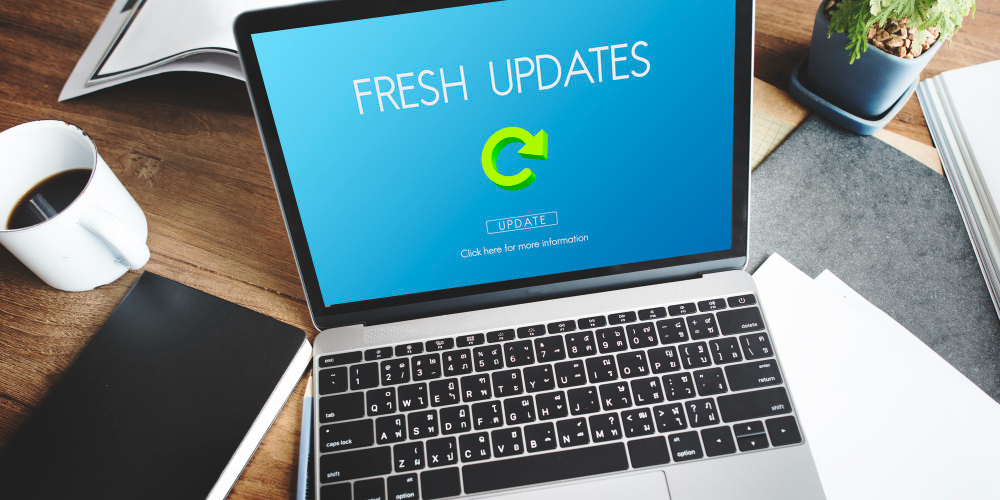Organizations that consistently apply software updates significantly reduce their risk of security incidents, according to recent industry research. Updating software might not be the most exciting task, but it remains one of the simplest and most effective ways to protect your systems. New versions of course improve features or designs, but it should be noted that they also contain fixes that close gaps which older versions leave open. In other words, when software is current, it is harder for unauthorized users to take advantage of those weaknesses because the entry points have already been sealed. Ignoring updates means relying on tools that no longer have full support, and over time that creates unnecessary risks. By making updates a routine rather than an afterthought, you gain better performance, fewer crashes, and fewer interruptions to your work. It is a small step that brings lasting benefits because systems run more reliably when they are maintained.
What Ransomware Really Does
Ransomware is a form of digital lockout. Files remain in place, but you lose access to them until a payment is demanded. In practical terms, this can stop important activities: invoices do not send, reports do not open, and daily operations pause. The impact is frustrating rather than dramatic—it wastes time, interrupts schedules, and causes delays that can easily spread across a business or household. The impact of a ransomware attack often traces back to simple oversights—for instance, using outdated software or overlooking a device that was never updated. Once that door is left open, it is much easier for the lockout to happen. The good news is that prevention is both possible and straightforward. Regular updates, careful management of software versions, and a clear overview of the systems you rely on greatly reduce the chance of disruption.
Digital Spring Cleaning
Over time, computers and devices collect programs, plugins, and tools that no longer serve any purpose. These items take up space, slow performance, and, more importantly, can create weak points if they are no longer updated. It is worth reviewing what is installed and removing what is not used. This is not a technical exercise so much as a practical one: a smaller list of applications is easier to manage and easier to keep updated because you know exactly what matters. The process does not take much effort and the payoff is clear. Systems run faster, issues are easier to spot, and the overall environment feels more stable. Digital spring cleaning comes down to reducing clutter so that you can focus on the tools that genuinely support your work. A short session of review once or twice a year makes management easier and reduces the chances of unwanted problems.
Backups as Safety Nets
Backups exist to make recovery simple. If files are locked, lost, or damaged, a backup means you can restore them quickly and continue without major disruption. This is why regular backups are essential: they provide certainty that important data is never fully out of reach. They do not need to be complicated or expensive; they just need to be consistent. A combination of cloud storage and physical backup is often the best option because it ensures there is more than one copy available. Treating backups as routine—like charging a phone—removes stress because you know the safety net is already in place. The difference between facing a serious interruption and handling a minor inconvenience often comes down to whether a recent backup exists.
Password Pep Talks
Passwords are still one of the simplest but most important tools for protecting information. Weak or repeated passwords make access far too easy, while strong and unique passwords make it significantly harder to break in. The rule is straightforward: longer passwords that mix characters are better because they are more difficult to guess. Using the same password everywhere creates unnecessary exposure because one breach can affect multiple accounts. A password manager is a helpful option for anyone who does not want to keep track of long lists, and adding multi-factor authentication makes protection stronger still. These steps do not take much time, yet they prevent avoidable problems and make your digital life more secure. Good password practices are not about making things difficult for yourself—they are about making it harder for others to interfere.
The Smart Setup Choice
Managing software effectively is about knowing what you use and making sure it stays supported. Start with an inventory: which applications are installed, which versions are active, and which ones no longer serve a purpose. Removing unused items creates clarity because you only need to update and monitor the tools you actually rely on. Setting up automatic updates, where possible, saves time and prevents delays. Choosing software from providers who offer regular support is also critical because unsupported tools quickly become vulnerable. If a program has not seen an update for years, it is unlikely to provide the reliability you need today.
The ultimate goal is to create a clean, stable, and predictable computing environment—one that runs well without the need for constant troubleshooting or emergency fixes. By ensuring that your systems update themselves automatically and regularly removing any unnecessary or unused software, you significantly reduce the chances of unexpected problems. This proactive approach allows you to spend less time on maintenance and technical headaches and more time focusing on the important tasks that drive your work forward.

